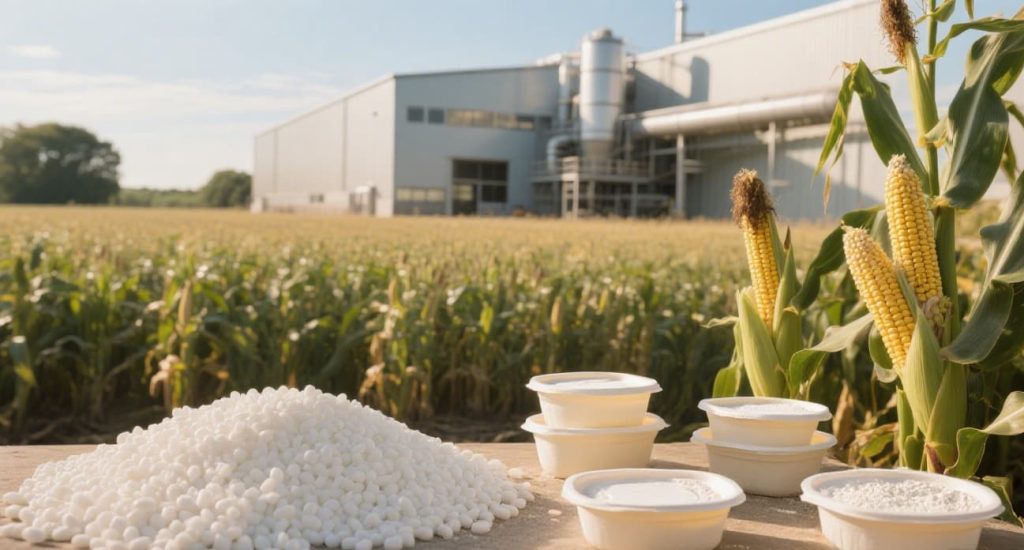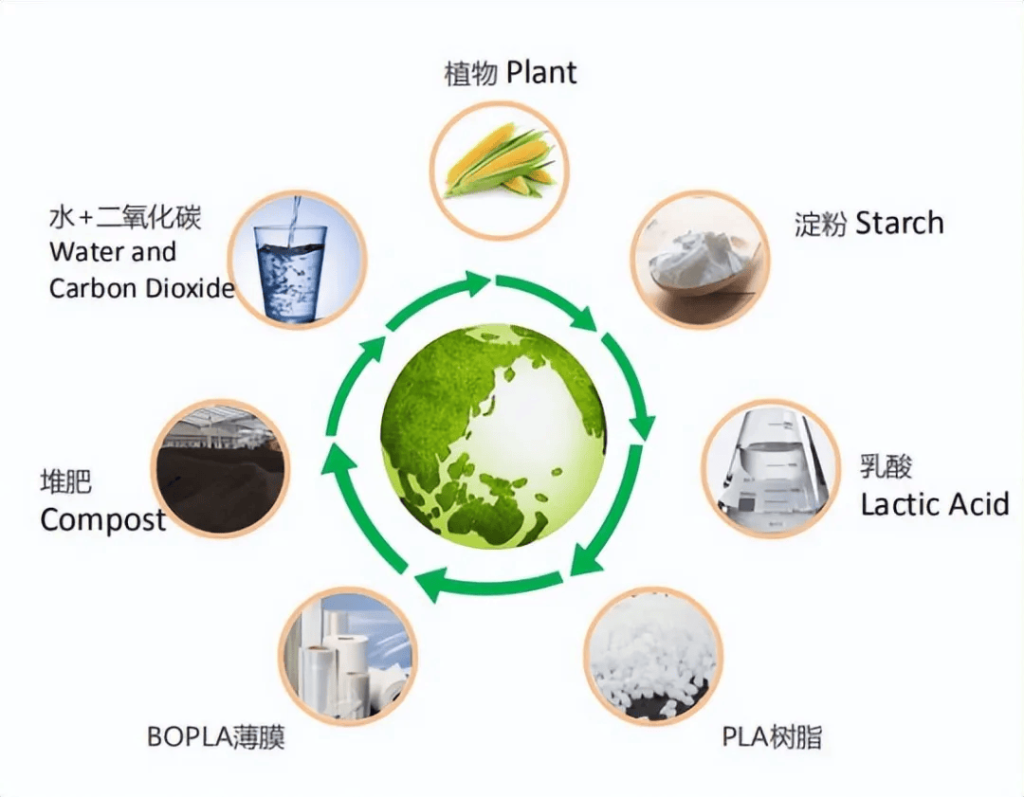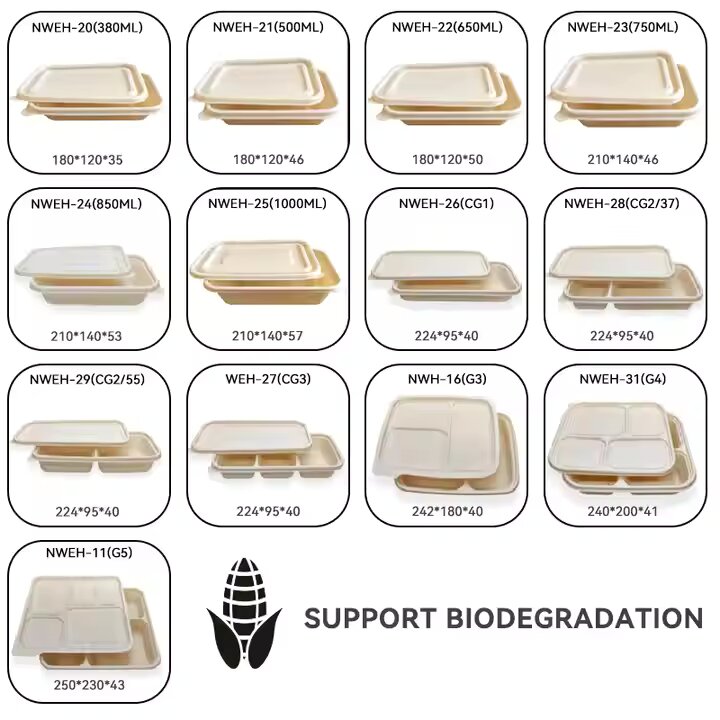Introduction
Imagine a takeaway container that does more than hold your meal. One that withstands microwave heat, handles greasy curries, and ultimately disappears into compost—leaving no harmful trace behind. That is the magic of the cornstarch take-out box.
Made from renewable plants, these containers are revolutionising food packaging. Lightweight, microwave-safe, and compostable, they offer a practical and eco-conscious alternative to traditional plastic. Here’s everything you need to know about their journey—from farm to fork and beyond.
From Crops to Containers: The Story Begins
Cornstarch packaging starts its life in the fields, derived from crops like corn, cassava, or sugar beet. These raw materials are processed into polylactic acid (PLA) or other biopolymers, forming the foundation for durable, food-safe containers.
Unlike petroleum-based plastics, cornstarch containers come from rapidly renewable resources. This reduces dependency on fossil fuels and lowers greenhouse gas emissions across their production cycle.

Heat-Ready Convenience: Microwavable and Safe
A key advantage of cornstarch containers is their heat resistance. Many are specifically designed to endure microwave heating, withstanding temperatures up to 120°C.
However, experts recommend limiting microwave use to short bursts of 2–3 minutes to maintain the container’s structure.
Composting Power: From Waste to Resource
Cornstarch take-out boxes are more than just disposable—they are designed for industrial composting. Under the right conditions—high temperatures, moisture, and microbial activity—these containers break down completely within 90 days.
They return to the earth, enriching soil and leaving no toxic residue.

Leak-Proof & Practical: For Every Meal
Despite their plant-based origins, cornstarch containers are impressively durable. Thanks to advanced engineering, they resist leaks and handle oily, saucy, and moist dishes with ease.
From hot soups to hearty stews, they offer a dependable and sustainable packaging option.
Why Xiamen Dashan Leads in Sustainable Packaging
One of the leading innovators in this space is Xiamen Dashan—a reputable manufacturer known for its high-quality food packaging solutions. With decades of expertise in both industry and trade, Dashan supplies a wide range of products including cornstarch, PET, RPET, PLA, PP, and PS packaging.
Their cornstarch take-out boxes are carefully crafted to combine practicality with environmental responsibility. Microwave-safe, leak-resistant, and compostable, these containers also offer custom branding and various sizes to meet specific business needs.
Xiamen Dashan proudly serves clients across foodservice, retail, and distribution sectors worldwide, delivering packaging that prioritises food safety, sustainability, and aesthetic appeal. Their mission is to empower brands to embrace eco-friendly packaging without sacrificing performance or design.

Common Questions About Cornstarch Take-Out Boxes
1. Are cornstarch take-out boxes microwave-safe?
Yes. Most are microwave-safe, though it’s best to heat food in short bursts under three minutes to prevent softening or warping.
2. How quickly do they compost?
In industrial composting settings, they usually break down within 90 days. Home composting may take significantly longer or may not be effective.
3. Are they safer than traditional plastics?
Yes. Cornstarch containers are free from BPA, phthalates, and other harmful chemicals, making them a safer choice for food contact.
4. Can they handle oily or liquid-based dishes?
Absolutely. They are designed to resist oil and moisture, making them suitable for a wide variety of food types.
5. Where can I buy cornstarch take-out boxes?
Many packaging suppliers offer them. For high-quality, customisable options, manufacturers like Xiamen Dashan are a trusted choice for global foodservice providers.
Conclusion
The cornstarch take-out box is more than just a container—it’s a symbol of what sustainable packaging can achieve. From the farm to the microwave, then back to the earth as compost, its lifecycle embodies a true circular economy.
Whether you’re a business aiming to reduce your environmental impact or a consumer seeking eco-friendly alternatives, this versatile container proves that sustainability and practicality can coexist beautifully.
📚 References
- Compostable Packaging: Pros and Cons in 2023
https://sifted.com/resources/compostable-packaging-the-pros-and-cons-in-2023/ - Microwaving Biodegradable Products: A Sustainable Kitchen Guide
https://www.restaurantware.com/blogs/eco-friendly-solutions/microwaving-biodegradable-products-a-sustainable-kitchen-guide - Cornstarch Packaging Market Overview
https://www.futuremarketinsights.com/reports/cornstarch-packaging-market - Disintegration of Commercial Bioplastic Products Under Industrial Composting Conditions
https://www.nature.com/articles/s41598-025-91647-z - The Realities of Compostable Packaging
https://packagingeurope.com/features/the-realities-of-compostable-packaging/9985.article - Why Compostable Packaging Isn’t Always the Best Solution
https://www.greenbiz.com/article/why-compostable-packaging-isnt-always-best-solution - Why Cornstarch Packaging Is Sustainable
https://ecopackables.com/blogs/news/what-makes-cornstarch-packaging-sustainable - Global Biodegradable Packaging Regulations
https://www.packaging-gateway.com/features/biodegradable-packaging-regulations/ - Closing the Loop with Compostable Packaging
https://sustainablebrands.com/read/walking-the-talk/closing-the-loop-with-compostable-packaging - Composting Basics – US Environmental Protection Agency (EPA)
https://www.epa.gov/recycle/composting-home
